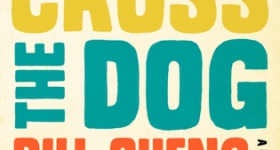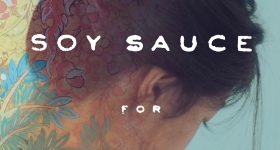More on my nifty pie chart below.
Hyphen editor Patty Tumang and I
were the lucky first readers who narrowed the pile into 10 stories.
Then we were fortunate to have writers Monica Ferrell and Preeta
Samarasan judge for us.
We received all the stories (sans
names) at the end of November, but because of pre-holiday craziness, I
decided that I would wait until my winter vacation -- 10 days of
visiting family on the East Coast and Midwest -- to do my reading. Of
course, it didn't occur to me until a day before I was leaving that
160-plus stories would be 40-50 pounds of paper weight. (Oops!) My
boyfriend tried to convince me to leave the stories at home, but I
insisted on bringing them with me. So, we had stories stuffed in every
pocket of our suitcases, backpacks, laptop bags ... I even had a two or
three in my purse at any given time. It was quite an adventure, but not
as much as reading what Asian American fiction writers are writing
about and how they are doing it.
I was a reader for our first
fiction contest in 2007, when I was studying fiction writing in
graduate school myself, and reading through the submissions really made me
think about my own work. It reminded me of when I first moved to the San Francisco Bay Area and I was staying
with my aunt Chitra Divakaruni, who was judging the National Book
Awards. She wrote about the experience in an essay for the New York Times:
"What I didn't realize was that this five-month marathon reading
session would change my understanding of the novel form and force me to
see my own writing differently."
I guess you could say my
experience with this contest was similar. It definitely made me think
about my own writing, but -- as a long-time editor of Asian American
media -- more than anything, it gave me insight into the ways this
community is seeing the world and their place in it.
I kept a
(very unscientific) spreadsheet while I was reading because I wanted to
see what the trends were. What was exciting to me is that there weren't
really that many prevailing themes. It wasn't like 50 percent of the
stories were about the "hardships of assimilation" or some easily
assignable theme recognizable from your Asian American Studies 101
class. Like much good writing that exists in the world, there were many
stories about family. Here are some of the brief tags from my
spreadsheet: "elders, bad older brother, disowned by parents, family
stories, family breakdown, death of father." But there were also
complex, interesting and divergent themes like these: "video game
death, graffiti, mermaids, materialism, suburban paranoia, marathon
runners, etc." Also, along with traditional narratives, there were
innovative styles utilizing distinctive first-person voice and
non-linear storylines.
Since we were reading these stories
blindly, I never knew what ethnicity the author was, so I kept a
running tab of what ethnicity the characters were, which I found an
interesting way to think about what our community is writing about. [See nifty pie chart above.]
Unsurprisingly, stories featuring Chinese or
Chinese American characters were the most dominant (18.42%), followed closely by
South Asians (17.11%), then Filipinos and Koreans (both 10.53%), Japanese (7.89%), and finally Vietnamese (3.29%).
There were also a smattering of stories featuring multi-Asian, Hmong,
Cambodian, Taiwanese, Iranian and Afghan characters (11.18%).
In
charting this, one interesting point was how even though there were a
small number of submissions focusing on Vietnamese characters and
narratives, these stories did very well in competition -- of five
stories completely about Vietnamese or Vietnamese American characters,
three made it into the top 10 (from two writers). I thought this was
especially
interesting in the year that Nam Le's
book of short stories was so well-received. It seems to me that there
is a real ground-swell
in Vietnamese American storytelling right now. I was also especially
fond of the stories that featured a multi-Asian cast of characters
because that spoke of the Asian America I am most familiar with.
But what I was most fascinated about was the large number of stories
that did not focus on Asian American characters. A good 21 percent
of
the stories had ethnically and racially ambiguous characters ... more
than stories focused on any specific ethnicity! [Of these stories,
finalist Celeste Ng's "Girls, At Play" is one.] It wasn't that these
stories were about non-Asian people, it was more that they were trying
to move past having "identity" as a defining factor. Interestingly, a
number of these stories were about sex -- but they were also about
suicide and donuts and mental illness and ghosts, etc. Now, some of
these stories left me hanging, for sure, but some of them were
excellent and, I felt, very brave. What does it mean for
Asian American literature if Asian American authors start writing
stories that don't reference our identity? So many writers say they
don't want to me known as an "Asian American author," but is writing
these ethnically ambiguous characters they way to acheive this goal?
I
don't have answers, but I am feeling really inspired by the energy
around all these stories. Stay tuned for more blogging on the contest
and be sure to pick up Issue 17 -- on newsstands in April -- to read
the winning story!









Comments